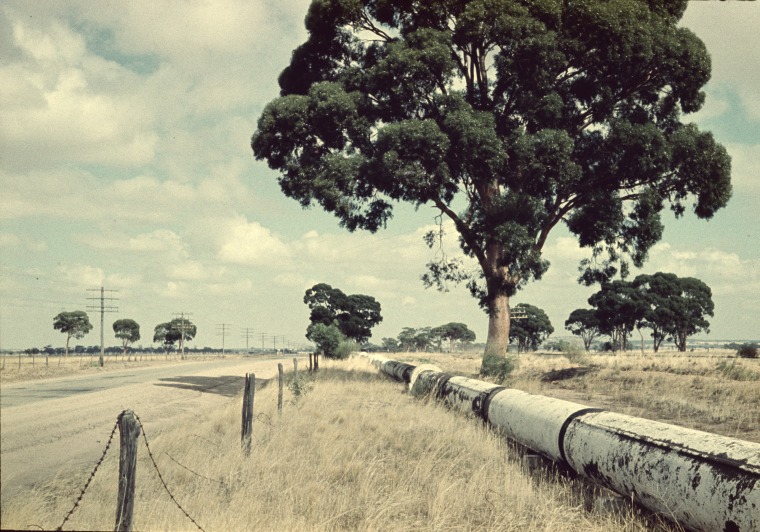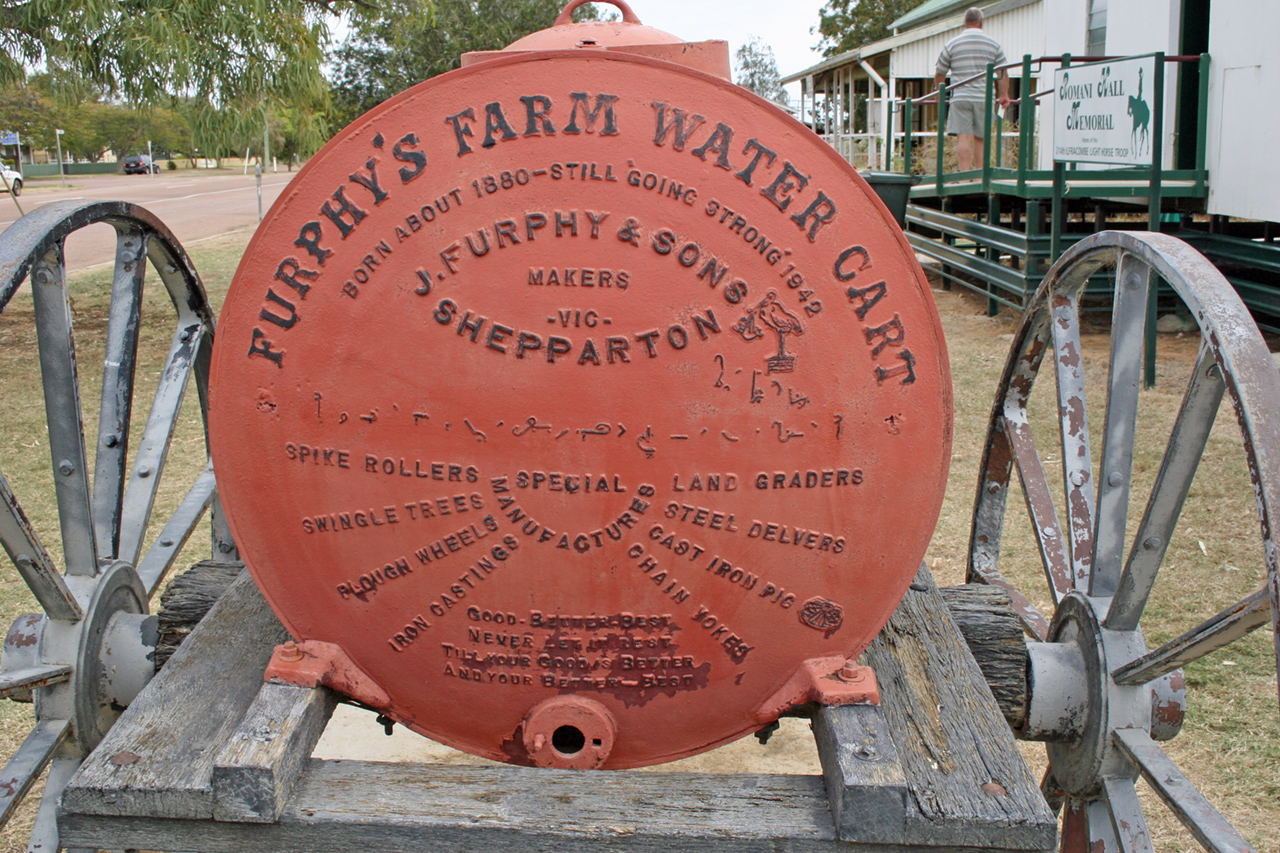Furphy water tank
Caring for our planet: 'never let it rest'
Good – Better – Best,
Never let it rest,
Till your Good is Better,
And your Better – Best
I can’t remember when I first heard this verse – maybe when I was 3 or 4 years old – but I can certainly remember my dad drumming it into me at every opportunity as I was growing-up on our family farm, north of Kellerberrin, in the middle of the frequently dry and dusty, drought-affected Western Australian Wheatbelt. For my dad and me, learning ‘Good – Better – Best’ was a life lesson, learning by rote sage advice from someone who came before us to always strive to do better throughout our lifetimes. I didn’t really connect with the context of where the verse was located at the time, but I do now, decades later, in an era of changing climates and a changed Wheatbelt – a land of more frequent droughts, and more unreliable rainfall patterns.

Photo: Claire Mercer / State Library of Western Australia
You see, the ‘Good – Better – Best’ verse was emblazoned on the back of an ancient and rusted-out ‘Furphy Tank’ water cart that stood abandoned and forlorn in a junk-yard of other old and unwanted turn-of-the-century machinery at the edge of our farm homestead. It sat there amid an assortment of decrepit and out-dated ‘things of iron and wood’ such as horse-drawn wooden wagons and drays and sulkies; and cast-iron and steel scarifiers, Sundercut stump-jump disc ploughs, and Sunshine harvesters.

Photo: Michael Jefferies (Flickr CC)
When my grandfather and great-grandfather took-up the farm in the first decade of the 1900s, conditions were a lot tougher than they are now, and things that we take for granted – like electricity and running water – were simply non-existent. ‘Power’ was by candle and kerosene lamp, and later, diesel generators and naked bulbs; and water came from rainwater tanks and wells and was carted around the farm in the ‘Furphy’s Farm Water Cart’.
My great-grandfather brought the cart with him when he moved to Kellerberrin from Numurkah, a small town in northern Victoria about 35 kilometres north of Shepparton, where J. Furphy and Sons had been manufacturing the carts since 1880. Furphy Tanks came into prominence during the First World War when they were extensively used for ferrying water to Australian troops scattered across the front lines of Europe.

Photo: Australian War Memorial
Those were hard days. And our country of ‘droughts and flooding rains’ meant that it was often boom or bust when it came to water supply. Water was like gold on isolated farming properties like ours – where there was no scheme water, and water rationing became the norm at the end of long, dry summers when the homestead rainwater tank started to run low.
I chose not to go back to the farm, but have instead made a career in the environmental conservation sector, always with an eye on agriculture, and the weather, or perhaps more importantly these days … on the climate, ‘for the times (and the climate), they are a-changin’’.

Photo: Don Pugh (Flickr CC)
I know from how much things have changed on our farm – I witnessed wells go dry, and salty, and patches of bush simply die-out – and on farms and properties and towns throughout Southwest Australia, that climatic conditions have changed considerably since I was a boy on our farm. Rainfall records show reduced rainfall, reduced run-off, increasing rainfall variability, reduced rainfall reliability, more droughts, more heat extreme events, more temperature records, more …
This period of climate change has been ‘double-whammied’ by an accompanying loss of native vegetation, wildlife habitats, biodiversity, and the range of ecosystem services that these natural elements have provided – such as maintaining fresh water supplies, and balanced natural cycles.

Image: State Library of Western Australia
It saddens me to go back to our old homestead these days. The farm there today doesn’t look much like the one I grew-up on. All that’s left of the big old homestead are the two chimney stacks, with the rest of the old weatherboard and iron house collapsed around their feet. The saltwater from the distant creek has crept-up and over the homestead block leaving none of the old York gums or garden fruit trees alive, and the water in the well more concentrated and saline than sea-water.
It’s a sad place to visit, but it’s also a kick-in-the-pants for any complacency that I might have about living on this planet. Sit back and do nothing, and this wave of land-, water-, plant-, and animal-degradation will continue unabated until our landscapes bear absolutely no resemblance to the healthy and thriving countryside that existed here for millennia.
I choose not to sit-back. I continue to work in the conservation and land stewardship sector (as the CEO of the Northern Agricultural Catchments Council), volunteer for the conservation not-for-profit Bush Heritage Australia and other community conservation groups, and serve on the Board of Farmers for Climate Action. My work here is not yet done. I’m still planning on making a difference.
‘Never let it rest.’
Richard McLellan is the CEO of one of Australia’s 56 regional Natural Resource Management (NRM) organisations – the Northern Agricultural Catchments Council (NACC) – based at Geraldton in mid-west Australia. An experienced senior-level ecologist, conservationist, and sustainable development program manager, Richard did his original training in environmental science, and has since enjoyed a varied and ever-evolving working career to now be primarily focused on issues relating to community-based natural resource management, private land conservation, and sustainable development.

